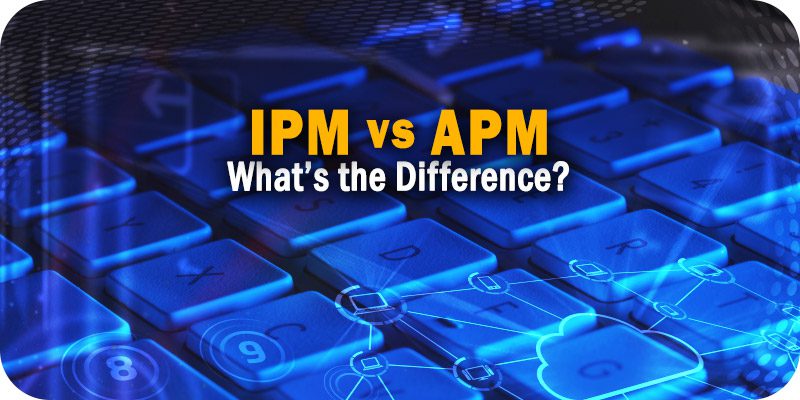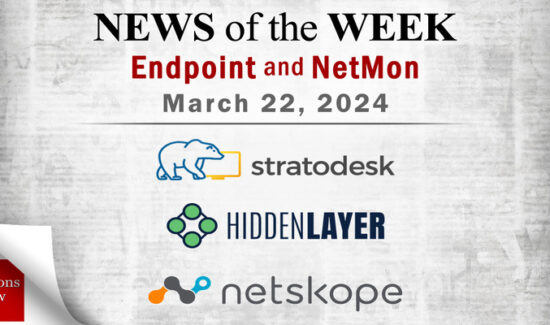IPM vs APM: What’s the Difference?


Solutions Review’s Expert Insights Series is a collection of contributed articles written by industry experts in enterprise software categories. Gerardo Dada of Catchpoint discusses the finer points of IPM and APM, the difference, and how they can work together.
 People often ask me what’s the main thing that has changed in the world of Application Performance Monitoring (APM) since solutions like Precise first emerged in the late 90s and AppDynamics and Dynatrace in the late 2000s. My answer is always the same – control. Back then, businesses had complete visibility and control over their IT environment. Everything was hosted in the same building, with core business applications securely delivered to employees via the humble local area network (LAN).
People often ask me what’s the main thing that has changed in the world of Application Performance Monitoring (APM) since solutions like Precise first emerged in the late 90s and AppDynamics and Dynatrace in the late 2000s. My answer is always the same – control. Back then, businesses had complete visibility and control over their IT environment. Everything was hosted in the same building, with core business applications securely delivered to employees via the humble local area network (LAN).
Today, it’s the exact opposite.
Everything is distributed: data, devices, and even people. Hybrid workers work from anywhere using apps hosted in multiple data centers or the cloud. Many companies are saying goodbye to LANs and running their enterprise without a LAN, WAN, or OnPrem data center. The Internet is the new enterprise network. No wonder traditional APM and NPM tools are coming up short. Ensuring the availability and reachability of applications now requires monitoring, managing, and troubleshooting the Internet. Unable to see beyond the app into the Internet maze and incapable of handling the scale of data generated by modern applications, conventional monitoring tools leave most IT teams flying blind.
What is Internet Performance Monitoring?
Just like the old legacy network required constant monitoring and optimizing, the same goes for the Internet, which is even more complex and fragile. Internet Performance Monitoring (IPM) is a new generation of solutions built from the ground up to provide deep visibility into the inner workings of the Internet. As we have become more dependent on the Internet, we are increasingly seeing IPM become essential for any business. IPM looks at all factors that make up Internet resilience – availability, reachability, performance, and reliability.
What are the Key Differences Between APM and IPM?
The first observability solutions, a combination of RUM, logs, metrics, and APM, emerged in the last ten years. What made them different was their ability to provide multiple points of view that could accurately identify issues in the application stack. The industry definition of observability has since evolved into a form of monitoring that doesn’t just alert when there’s a problem but also provides insights into the total health of your system and root cause analysis. IPM has likewise evolved over the years into an observability solution but with a different focus than APM.
APM tools focus on code optimization, looking at everything that impacts application performance – tracing, discovery and diagnostics, of course, across not only the application but also the infrastructure that support it, database, and network. APM is useful for isolating hardware and software dependencies, removing performance bottlenecks, and measuring end-user experience via RUM, but always with application performance in mind.
IPM, on the other hand, focuses on the network, analyzing key Internet performance metrics to provide insights on the customer, workforce, application (or API) experience over the Internet – essentially, every aspect of the Internet that impacts your business. Note that this applies broadly to the internet (defined essentially as a network that uses TCP/IP), which includes your internal LAN, WAN, ROBO, EDGE, etc.
IPM and APM also differ in using synthetics, RUM, and profiling tools. Take APM tools, for example, which have synthetic agents in the cloud. They’re great for optimizing the performance of an application but lack visibility into the customer or workforce experience. Customers and employees don’t access systems purely from the cloud; instead, they connect from computers at home, laptops on the road, or tablets from local coffee shops via their Internet service provider.
This is when IPM becomes mission-critical. IPM observes performance from thousands of monitoring vantage points worldwide and provides visibility into every layer of the Internet, from ISPs and wireless carriers to BGP ASNs. With IPM, you’ll be able to explain the difference in experience between a user connecting via AT&T in California on an Akamai CDN versus a user connecting using Virgin broadband in London on a Cloudflare CDN. It’s this kind of deep end-to-end visibility into every component of the Internet stack that sets IPM apart. What’s clear is that the modern network engineer needs IPM tools and to develop an IPM skillset.
Can APM and IPM Work Together Successfully?
In a word, yes. APM and IPM focus on different things. Sure, vendors love to peddle the message that you can use a single solution for all your monitoring needs– preferably theirs. But the truth is, there is no reason why APM and IPM can’t work together; in fact, they’re complementary. APM tools can help you optimize your website code, content, and data flows, but they lack end-to-end Internet visibility. In that case, you would augment your monitoring solution with IPM to ensure Internet resilience. When adding any solution to your monitoring and observability strategy, the key is to look at your business requirements and work from there.
Given how quickly COVID transformed the IT landscape, it’s impossible to predict what the world will look like in 5-10 years. What’s true is that we’re in the last stages of the evolution from the LAN to WAN, the Internet is becoming more and more complex as it grows in scale, and hybrid work isn’t going anywhere despite the RTW movement… all of which makes it more challenging than ever to ensure the resilience of your core applications, sites, and services. The need for IPM in your stack just became imperative.






















